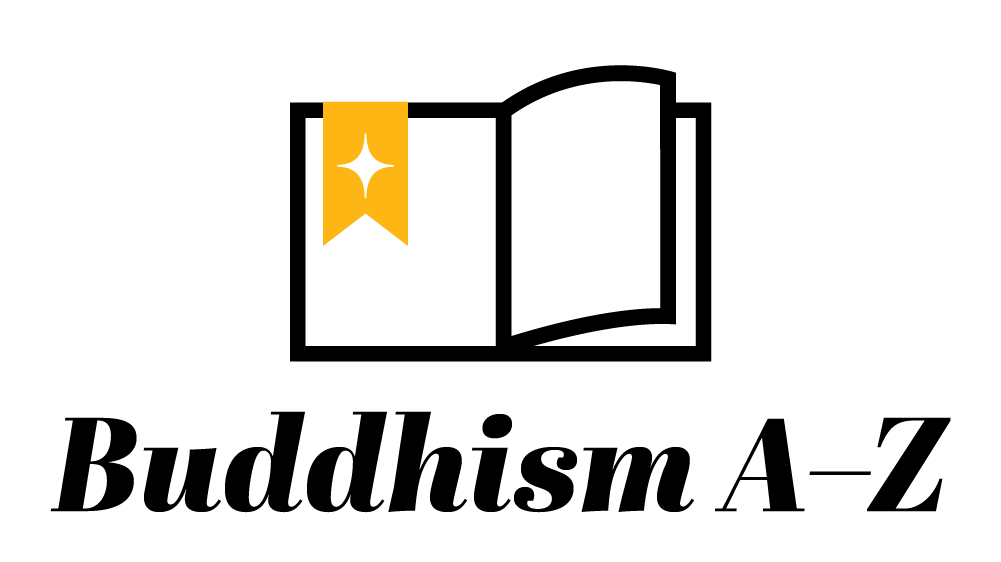What is Mindfulness?
Mindfulness (Pali: sati; Sanskrit: smṛti) is being purposefully aware, without judgment, of what is happening in your mind, body, and environment in the present moment. Mindfulness is both a mental state and a practice where one pays attention on purpose. In a nutshell, mindfulness is intentional awareness.
Mindfulness is a fundamental aspect of meditation and helps develop insight, concentration, and a deeper understanding of the nature of reality. Rooted in Hindu and Buddhist traditions, mindfulness has gained Western popularity with influential figures like Thich Nhat Hanh, Jon Kabat-Zinn, Joseph Goldstein, and Sharon Salzberg.
Through different types of mindfulness practice, we can develop a moment-to-moment awareness of ourselves and our environment, a sense of decreased stress and anxiety, and a greater understanding of ease and well-being. There is always some element of mindfulness present at any moment—if you are aware, you are mindful. However, true mindfulness comes when one is both aware and unattached to what is present in their mind, body, and surroundings. This is referred to as the “egoless awareness” of mindfulness.
While Buddhists have been practicing mindfulness for thousands of years, you don’t have to be a Buddhist to incorporate it into your life. Every moment of your day, from your morning coffee to bedtime, is an opportunity to tune in, take a mindful moment, and engage with what’s really going on around you.
As Thich Nhat Hanh, known as “the father of mindfulness,” puts it, “To practice mindfulness is to become alive.”
Benefits of Mindfulness Practice
There are a number of proven benefits to mindfulness practice beyond feelings of calm, clarity and ease. Though research on mindfulness is ever-increasing, many scientific studies have already been done on the benefits of mindfulness and meditation in particular. Some of those benefits include:
Enhanced Physical Health
Neuroscientific research has found that mindfulness practices dampen activity in the amygdala while increasing the connection between the amygdala and prefrontal cortex. These parts of the brain help us be less reactive to stressors and recover more quickly when stress is experienced. Chronic stress is known to be a major contributing factor to a number of serious health issues, making mindfulness not only a way to improve your day-to-day well-being but also a viable tool for improving physical health.
Reduced Stress & Anxiety
Pioneered by Jon Kabat-Zinn, the Mindfulness-Based Stress Reduction (MBSR) program combines meditation, body awareness, and yoga to enhance stress management. MBSR emphasizes present-moment awareness, helping individuals disengage from ruminative and stressful thoughts. By fostering non-judgmental observation of their experiences, participants develop resilience and greater control over their reactions to stressors. Research has shown that mindfulness practices like MBSR can effectively reduce stress and anxiety and improve overall well-being. Kabat-Zinn’s work has played a pivotal role in popularizing mindfulness as a powerful tool for stress reduction in healthcare and psychology.
While mindfulness is not a replacement for medical treatment, mindfulness-based therapy has been shown to reduce anxiety. Being aware of the present moment can be grounding to someone experiencing anxiety, as can being aware of your feelings without attaching judgment to them.
Mindfulness can also help us to determine factors in our lives that may be exacerbating stress and anxiety — like spending hours scrolling social media — and help us to work with them more skillfully. Practices like mindfully reading the news, or driving mindfully, can help nourish our well-being instead of depleting it.
Better Relationships
Several studies have found a positive link between mindfulness and enhanced relationship quality. Since practicing mindfulness helps us become more resilient to spikes in the stress hormone cortisol, we’re able to remain more level-headed when we have a conflict with someone we’re in a personal relationship with. There are even studies that suggest mindfulness makes both breakups and divorce easier.
Mindfulness practice is also found to cultivate better relationships between parents and their children, with mindful parenting practices linked to positive behavior in children.
Improved Mental Health
Clinical psychology has embraced mindfulness techniques for treating various psychological conditions, such as depression, anxiety, and stress, along with applications in education, healthcare, and other fields.
However, mindfulness practices shouldn’t be considered as replacements for treatments for mental illness, such as therapy or taking prescription drugs. Instead, you can consider them as adjunct to other treatments, as a way to improve your general well-being.
Better Sleep
Mindfulness techniques, such as relaxation exercises and focused breathing, can aid in improving sleep quality by reducing racing thoughts and promoting relaxation before bedtime. A mindful body scan can be a helpful practice for falling back to sleep if you find yourself awake in the middle of the night.
Types of Mindfulness Practice
Mindfulness is a basic capability of the mind. It can be practiced for a variety of reasons and in a variety of ways ranging from spiritual to secular. Since mindfulness is always present in the mind, you can technically practice it in every moment of every day. Whether it be while drinking your morning tea, during your afternoon yoga practice, or observing your breath as you fall asleep, the tools of mindfulness are always available. Some of the most popular ways to practice mindfulness include:
Mindfulness Meditation
Seated, walking, body scan, and movement meditations are all beneficial mindfulness practices to center your mind and body in the present moment. Coordinating the mind and breath is an essential part of mindfulness practice in each of these meditation styles. By focusing on the breath, you can bring an element of mindfulness meditation to any activity. A basic mindfulness meditation is a great way to start your day.
Mindful Eating
Mindful eating is a wonderful way to incorporate mindfulness practice into your daily life. When we bring our attention to what and how we eat, we connect with ourselves and appreciate the world around us that brought the food to our table. In truly enjoying the crunch of an apple in autumn or the sweet chill of ice cream on a summer day, we savor the present moment. When we bring our intentional awareness to the food in front of us, even the ordinary can become extraordinary.
Mindful Journaling
The practice of journaling can allow us to examine our present moment. By journaling and reflecting on our lives through writing, we can tap into our present emotions, the experiences we face during the day, and what weighs on our mind. When practiced regularly, journaling can help us better understand our experiences and emotions by practicing awareness.
Mindful Movement
As Thich Nhat Hanh says, “We can sit and breathe, but it is just as important to practice mindful breathing while we are moving.” Whether through yoga, athletics, the arts, or our daily movements like walking or stretching, bringing mindfulness into our activities offers us an opportunity to connect the body and the mind.
Taking a Mindful Pause
Taking intentional moments to pause throughout your day is one of the easiest ways to incorporate mindfulness into your life. Any spare moment can be used for a mindful pause. Whether it’s taking three conscious breaths in the doctor’s waiting room, pausing to notice your emotions before sending a reactive email at work, or intentionally noticing your surroundings while driving, a quick, attentive pause can greatly improve your day.
Mindful Concentration
In every moment of every day, we are faced with a multitude of things to observe. Our days are filled with an endless rotation of thoughts, emotions, movements, objects, and experiences. By setting the intention to mindfully concentrate on each of these occurrences as they arise, we can naturally infuse mindfulness into our lives. This way, mindfulness becomes a natural part of life, without the need to always set aside time solely to practice it.
Frequently Asked Questions
Where does mindfulness come from?
While the modern mindfulness movement is relatively new, Buddhists have been teaching and practicing mindfulness for thousands of years. The concept of mindfulness is rooted in Buddhist philosophy. “Right mindfulness” is the seventh step on the Buddha’s Eightfold Path to awakening, and is explored in early teachings on the Buddhist system of psychology known as the Abidharma. In the Satipatthana Sutta, the Buddha’s fundamental teaching on meditation, he also taught the four foundations of mindfulness.
Does mindfulness help anxiety?
Yes, mindfulness can be a great tool to help ease anxiety. When we’re anxious, we are often filled with worry, self-criticism, shame, and fear. Mindfulness helps us to practice self-compassion, bringing attention to our pain and allowing us to view it from a place of non-judgement. Instead of pushing away or ignoring our anxious thoughts and feelings, we recognize them and allow them to be seen for what they are.
By using mindfulness to return to the present moment, we can recognize where we truly are and detach from what our mind might be telling us. You can also choose to work with a professional trained in Mindfulness-Based Therapy or Mindfulness-Based Stress Reduction to further explore how mindfulness can improve anxiety disorders.
Can mindfulness help you sleep?
Practicing mindfulness can lead to an easier, deeper, and more restful sleep. By bringing mindfulness to our body as we fall asleep, we can ease ourselves into deep relaxation and quiet the mind. If you find your mind too full of chatter and worry to fall asleep, a mindful body scan can be a helpful practice to turn to. A moment of mindfulness in our nighttime routine can ground us in the present moment, allowing our mind and body to relax as we drift off to sleep.
Which is better, mindfulness or multi-tasking?
With so many projects, relationships, and needs pulling our attention in multiple directions every day, multi-tasking may seem like the best choice to knock off items from our to-do lists as quickly as possible. However, while multi-tasking may seem more efficient, our brain quickly becomes overwhelmed trying to complete numerous tasks at once. When we constantly switch between tasks, we end up taking longer and completing them less efficiently than finishing one task at a time. Instead, we can utilize mindfulness to focus on one task at a time, allowing our mind to be fully present with what we’re doing and give it our full attention.
Can kids practice mindfulness?
You’re never too young — or too old — to practice mindfulness. A mindfulness practice can be beneficial for both parents and children, helping parents stay in the present moment when engaging with children. Mindfulness practice holds all the benefits for children as it does for adults, can help children understand their emotions
Buddhism A–Z
Explore essential Buddhist terms, concepts, and traditions.

